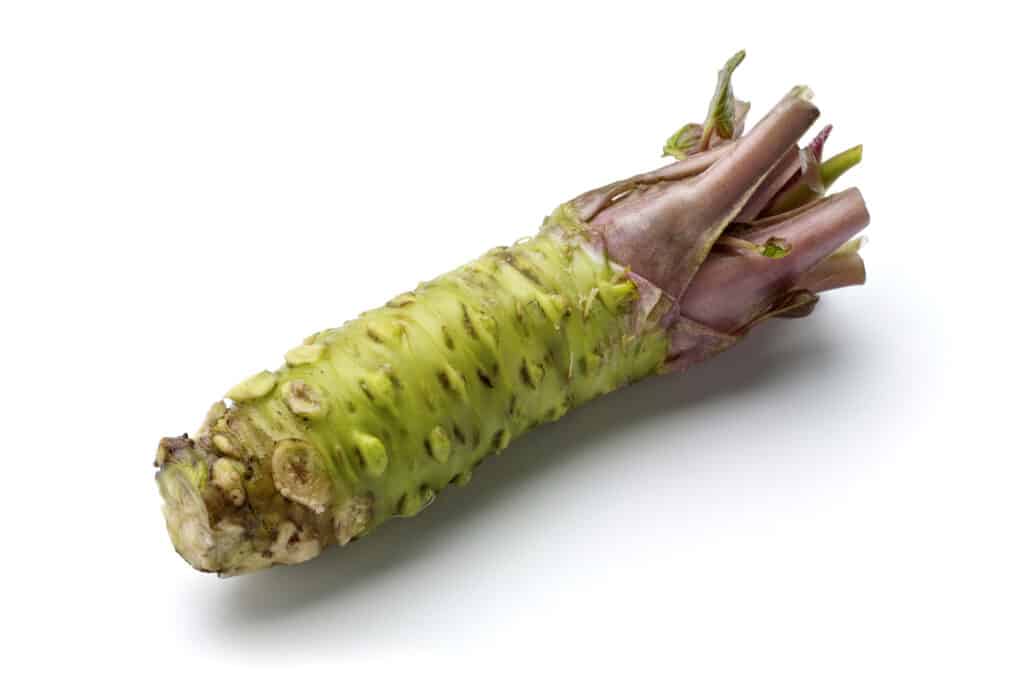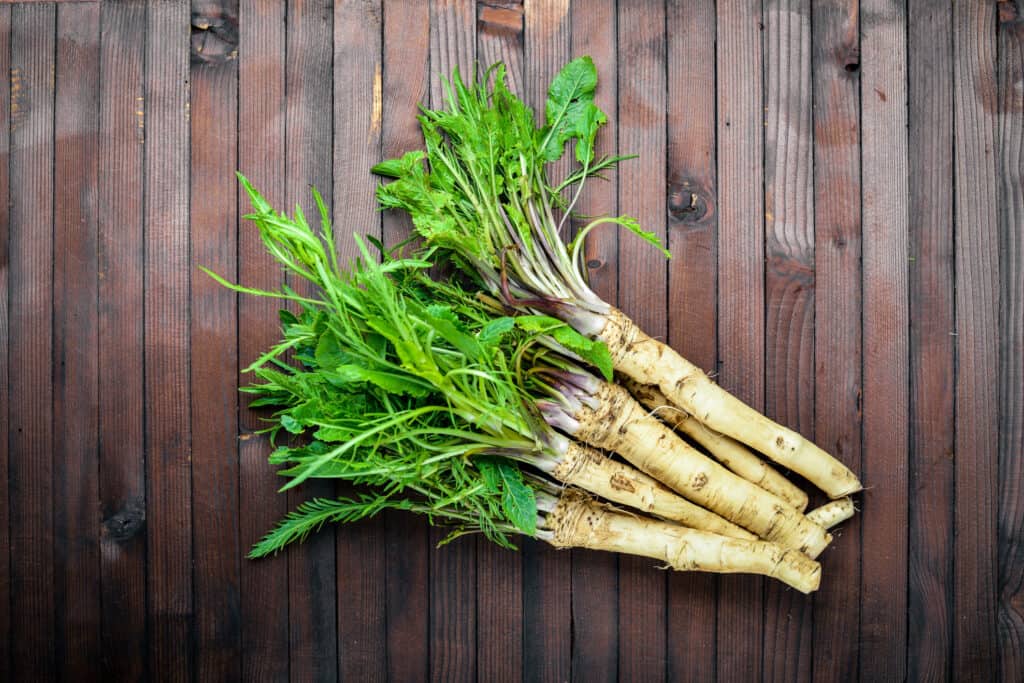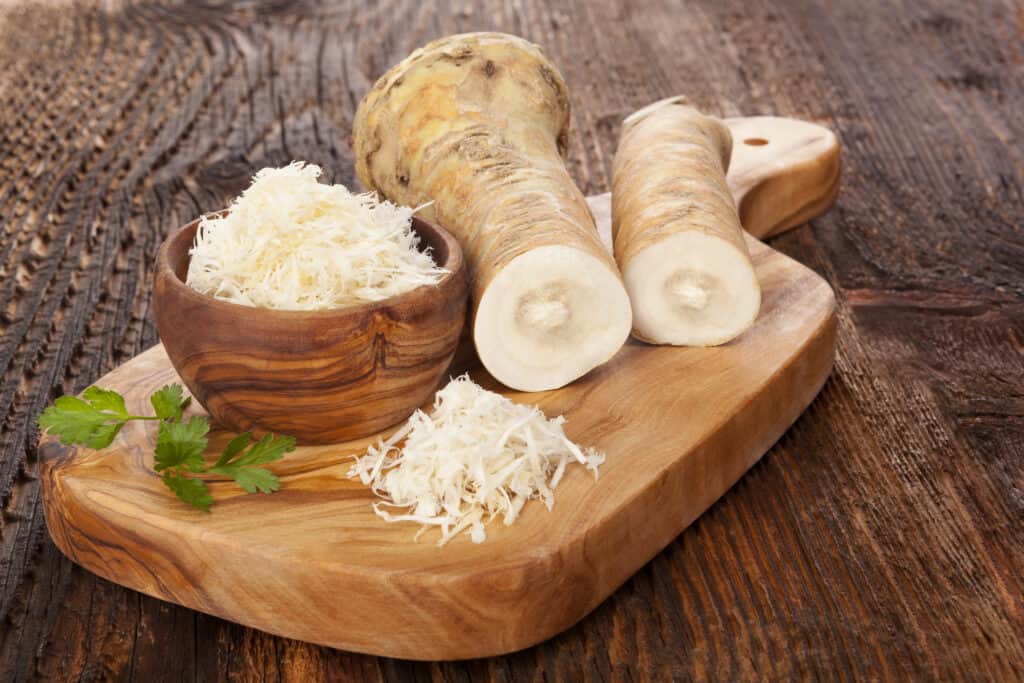When it comes to spicy, flavorful foods, wasabi and horseradish are two of the most well-known and loved condiments. However, many people think wasabi and horseradish are one and the same. This is because they have a similar appearance and pungent taste, but wasabi and horseradish are actually two different plants.
Wasabi has a sharp, distinct flavor that can be described as similar to that of hot pepper and is commonly used as a condiment for sushi and sashimi, while also adding flavor to other dishes like noodles, rice, and beef. Horseradish, on the other hand, has a fiery, biting flavor that is beloved by many. Often used as a condiment for roast beef, horseradish can also add flavor to other dishes including potatoes, salads, and sandwiches.
But what exactly are the differences between these two zesty ingredients?
Differences Between Wasabi and Horseradish
Wasabi vs. Horseradish: Classification and Origin
Though different species, wasabi and horseradish are both of the family Brassicaceae, which includes cabbage, mustard, broccoli, and radish but are from different species.
The edible part of wasabi comes from its rhizome, a subterranean (growing underground) stem that is ground into a paste, while horseradish is a root that is grated or ground into a condiment. Wasabi is native to Japan, Eastern Russia, and the Korean Peninsula. However, as a result of unprecedented hot weather in Japan, wasabi is suffering, being replaced by the Western horseradish plant, which is more heat tolerant.

Horseradish is a root vegetable used worldwide as a condiment and spice and is assumed to be native to Western Asia and Southeastern Europe. During the middle ages, the root and leaves were used for medicinal purposes, while Scandinavia and Germany primarily used horseradish as a condiment on meats.

iStock.com/Nataliia Mysak
Wasabi vs. Horseradish: Description
The main difference between wasabi and horseradish is found in their appearance. Wasabi is pale green with heart-shaped leaves that face the sky. The plant stem grows underground as a rhizome. It is long and bumpy and grows horizontally beneath the soil. Wasabi plants grow to approximately two feet tall.
Horseradish is beige to white. Though horseradish is harvested from the plant’s root, above ground, a straight stalk with green leaves to a height approaching two feet. The tapered root is where the magic lies. If left undisturbed for years, the root can penetrate 10 feet deep into the soil.
Wasabi vs. Horseradish: Uses
Wasabi is difficult to cultivate, making it harder to find and more expensive to buy. As a result, wasabi as a condiment will often get mixed with horseradish. Wasabi is also significantly hotter than horseradish. The heat of wasabi comes on quickly and dissipates quickly, while the heat of horseradish lingers.
The flavor of wasabi paste can diminish within 15 minutes when left uncovered, so sushi chefs often place it between the rice and fish to preserve the taste. You can find a snack called wasabi-mame (wasabi bean) in Japan. It consists of roasted or fried legumes, such as peanuts and peas, coated in a mixture of wasabi powder, salt, sugar, and oil.
Horseradish has a spicy, sharp flavor that is similar to but not as intense as wasabi. It’s also slightly sweet and slightly bitter.
Horseradish sauce is made from grated or mashed horseradish mined with vinegar. It is normally a white or creamy beige but will darken as it loses flavor. Refrigerated horseradish sauce lasts about three months. Add horseradish to sandwiches, salads, and Bloody Mary cocktails for a kick, or pair it with meats such as prime rib.

iStock.com/eskymaks
Wasabi vs. Horseradish: How to Grow
How to Grow Wasabi
Since wasabi can grow to 24 inches in height, you should space the plants roughly 12 inches apart. The wasabi plant is a perennial vegetable that is difficult to grow. Not only is wasabi hard to grow, but the rhizomes take about two years to mature.
Growing wasabi tips:
- Grow in air temperatures between 46 – 70 degrees Fahrenheit.
- Wasabi plants prefer shady conditions and don’t tolerate direct sunlight well.
- Keep the soil watered, but not too wet.
- Soil should be slightly acidic to neutral pH.
- Leaves begin to grow within eight weeks. You can harvest them and trim them while you wait for the rhizomes to mature
- Harvest in the spring to early fall.
How to Grow Horseradish
Horseradish is a hardy, perennial plant that grows stunning emerald-green leaves. If you were to leave it undisturbed for years, you would find the glorious taproot penetrating as much as 10 feet deep with many secondary roots and rootlets in a tangled mass.
Growing horseradish tips:
- Horseradish does best in full sunlight.
- Grows best between 45 – 75 degrees Fahrenheit.
- Use rich, moist loamy soil – avoid shallow, stony soil.
- Plant root cuttings in loose soil about two inches deep in early spring.
- Space plants 30 inches apart.
- Horseradish doesn’t need much to thrive, so water the soil once a week and use mulch around the plant to lock in moisture.
- Harvest horseradish after one year
So, there you have it! The key differences between wasabi and horseradish. If you’re looking for a spicy flavor without the intense heat, give horseradish a try. And if you’re looking for a fiery flavor kick, wasabi is the way to go.
While they taste similar, you can distinguish between wasabi and horseradish by their appearence. Wasabi is a green, bumpy rhizome, while horseradish is a beige taproot. Many restaurants and sushi bars will make a mixture of Chinese mustard, horseradish, and green dye. We will never really know if we are eating true wasabi. If you want to try the real deal – you will find wasabi growing wild in the river valleys of Japan!
Up Next:
The post Wasabi vs. Horseradish appeared first on AZ Animals.
from Animal News, Facts, Rankings, and More! - AZ Animals https://ift.tt/PSjbU5w